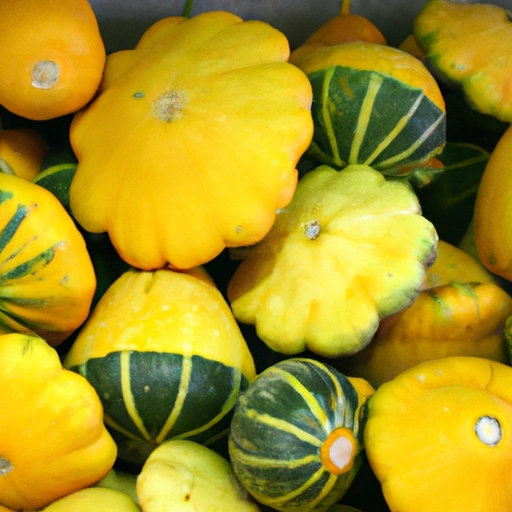Gem Squash
Description

Gem squash (Cucurbita pepo var. pepo) is a type of summer squash similar to zucchini and pumpkin. It is known for its distinct round shape and vibrant green skin that matures to a yellow-orange hue. The flesh inside is dense, mildly sweet, and pale yellow or orange, containing a cavity filled with edible seeds. A staple in South African cuisine, gem squash is gaining popularity worldwide for its versatility in recipes and nutritional benefits.
Common uses
Gem squash is often used as a vegetable accompaniment to meals, stuffed with a variety of ingredients, or incorporated into soups, stews, and bakes. It can be sliced, diced, or even pureed, making it a versatile ingredient in both savory and sweet dishes.
Nutritional value
Calories
A typical gem squash (weighing approximately 195 grams or 7 oz) contains around 30 kcal (126 kJ).
Protein
Each gem squash provides about 2 grams (0.07 oz) of protein, making it a modest source of this essential macronutrient.
Fat
This squash variety is low in fat, containing less than 1 gram (0.035 oz) per serving.
Carbohydrates
The carbohydrate content is about 7 grams (0.25 oz) per gem squash, most of which is dietary fiber.
Vitamins
Gem squash is rich in vitamin A and also contains vitamins C and E, which are important for immune function and skin health.
Minerals
It provides key minerals such as potassium, magnesium, and iron, essential for various bodily functions.
Health benefits
Regular consumption of gem squash can contribute to a healthy diet. It's high in dietary fiber, which aids in digestion and can help maintain a healthy weight. The vitamin A content supports good vision, while the vitamin C boosts the immune system. The antioxidant properties of vitamins A, C, and E help combat free radicals, reducing the risk of chronic diseases.
Potential risks
Gem squash is generally safe for consumption by most people. However, as with any food, there is a risk of allergies or intolerances in some individuals. Overconsumption may lead to excessive fiber intake, which could cause digestive discomfort.
Common recipes
Popular recipes include stuffed gem squash, gem squash soup, and casseroles. It can also be used in pies, muffins, and as a substitute for pumpkin in many recipes.
Cooking methods
Gem squash can be boiled, baked, steamed, or roasted. The skin softens with cooking, making it edible in some preparations.
Pairing with other ingredients
It pairs well with strong flavors such as garlic, herbs, and spices. It also complements proteins like chicken, beef, and legumes, as well as grains like rice and quinoa.
Summary
Gem squash is a versatile and nutritious vegetable that is gaining popularity in kitchens around the world. Its mild flavor and soft texture make it suitable for a range of dishes, from savory main courses to sweet desserts. With its impressive nutritional profile and array of health benefits, gem squash is a valuable addition to any diet.